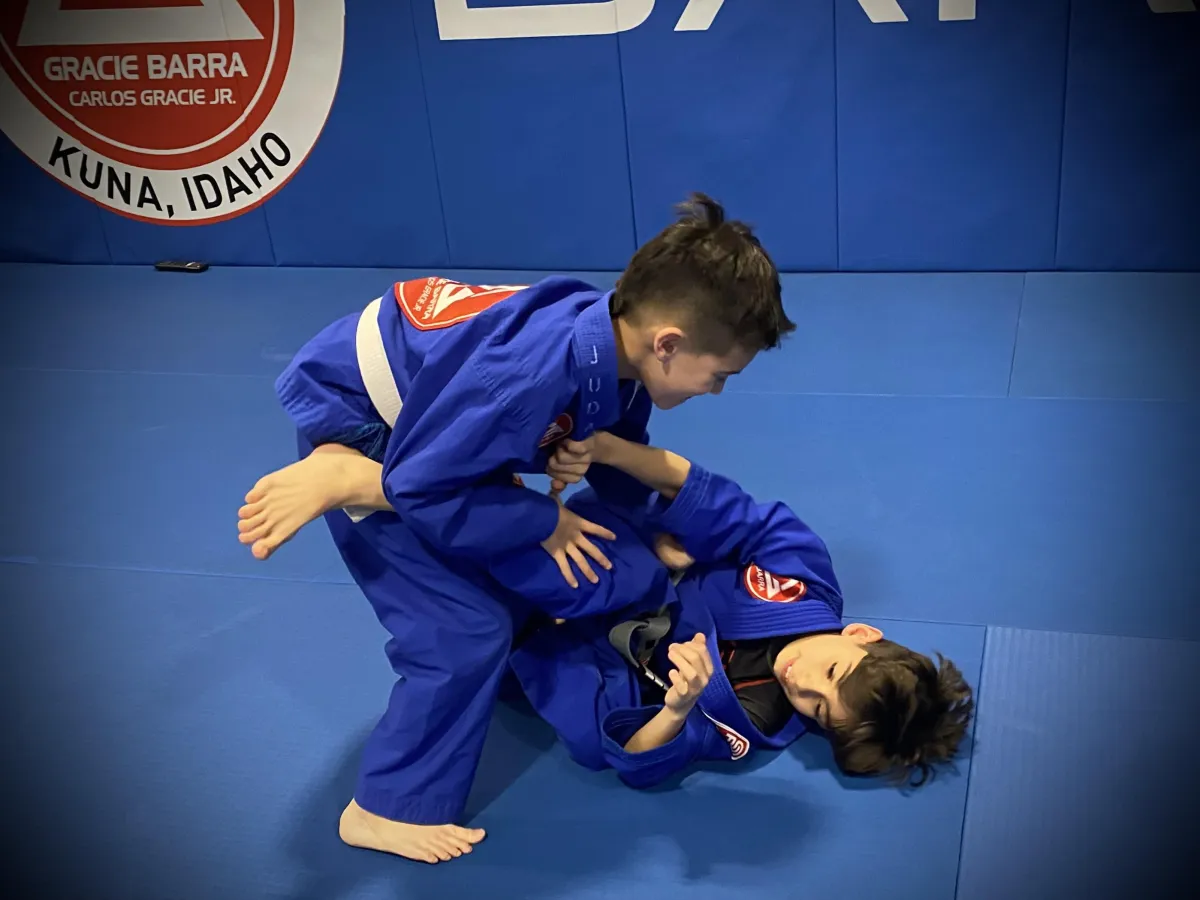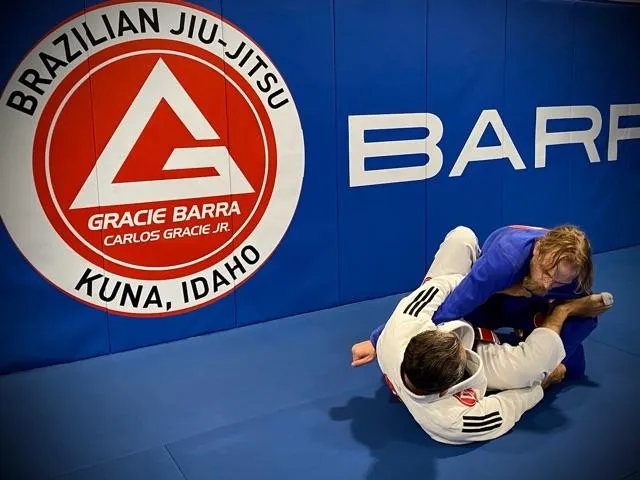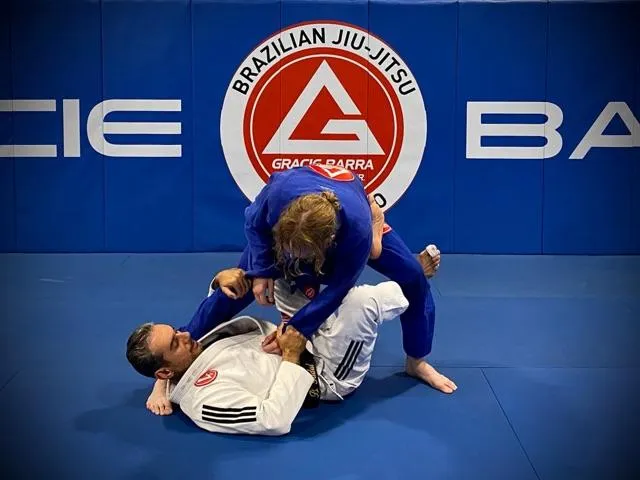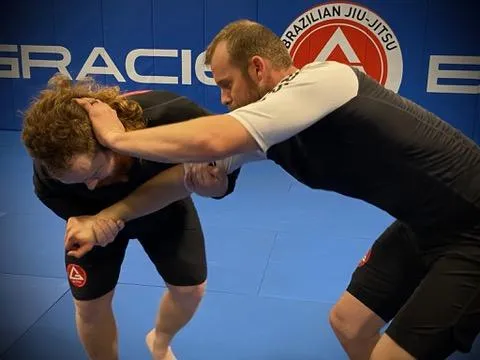GRACIE BARRA KUNA,
Jiu Jitsu For Everyone!
Transform your mind and body through the art of Brazilian Jiu-Jitsu. Begin your journey with Gracie Barra Kuna.


MISSION STATEMENT
We seek to train body, mind and spirit through the highest level of Brazilian Jiu-Jitsu instruction. We envision the art as a vehicle for individual development and the strengthening of the family spirit, going beyond the winning-losing or contest philosophy. – Master Carlos Gracie, Jr.
KIDS & ADULTS | GI & NOGI
FUNDAMENTALS & ADVANCED
Gracie Barra Kuna offers progressive Jiu-Jitsu training for students of all ages and skill levels.
Whether you're just beginning your journey or already an experienced practitioner, our structured classes are designed to support your development every step of the way.

GRACIE BARRA KIDS
At Gracie Barra Kuna, Jiu-Jitsu is more than a martial art — it’s a path to confidence, resilience, and respect. Through structured, age-specific training, children learn focus, discipline, and how to overcome challenges with a positive mindset.
In a safe and supportive environment, our certified instructors help students build strength, coordination, and essential life skills. Surrounded by a strong sense of team and belonging, they become part of a global Gracie Barra family, growing both on and off the mats. Practicing Jiu-Jitsu helps children develop confidence under pressure, problem-solving skills, and respect for themselves and others — lessons that last a lifetime.

LITTLE CHAMPIONS I
Ages 4 - 6
Our Little Champions I Kids Program introduces younger children to the fundamentals of Brazilian Jiu-Jitsu in a fun and engaging way.
• Improves motor skills and coordination
• Teaches teamwork and social interaction
• Builds confidence and discipline
• Introduces basic self-defense
Class Schedule:
Tuesdays & Thursdays: 4:30 - 5:15 PM
Kids - Available to all Gracie Barra Kuna members:
• Wrestling & No-Gi: Fridays at 5:30 PM (Kids of all ages)
• Kids All Ages: Saturdays at 10:00 AM (Parents welcome)
• Kickboxing: Saturdays at 12:15 PM (Adults & kids of all ages)



LITTLE CHAMPIONS I
Ages 4 - 6
Our Little Champions I Kids Program introduces younger children to the fundamentals of Brazilian Jiu-Jitsu in a fun and engaging way.
• Improves motor skills and coordination
• Teaches teamwork and social interaction
• Builds confidence and discipline
• Introduces basic self-defense
Class Schedule:
Tuesdays & Thursdays: 4:30 - 5:15 PM
Kids - Available to all Gracie Barra Kuna members:
• Wrestling & No-Gi: Fridays at 5:30 PM (Kids of all ages)
• Kids All Ages: Saturdays at 10:00 AM (Parents welcome)
• Kickboxing: Saturdays at 12:15 PM (Adults & kids of all ages)


LITTLE CHAMPIONS II
Ages 7 - 9
The Little Champions II Program is designed for slightly older kids, focusing on building resilience and confidence through achievable challenges.
• Enhances physical coordination and strength
• Fosters teamwork and communication
• Teaches self-defense in a safe environment
• Promotes discipline and personal growth
Class Schedule.
Mondays & Wednesdays: 4:30 - 5:15 PM
Kids - Available to all Gracie Barra Kuna members:
• Wrestling & No-Gi: Fridays at 5:30 PM (Kids of all ages)
• Kids All Ages: Saturdays at 10:00 AM (Parents welcome)
• Kickboxing: Saturdays at 12:15 PM (Adults & kids of all ages)

JUNIORS
Ages 10 - 15
Our Juniors Program provides a challenging and rewarding experience for pre-teens and teens, teaching leadership, resilience, and advanced self-defense techniques.
• Develops strength, agility, and coordination
• Builds confidence and a positive mindset
• Encourages teamwork and leadership skills
• Prepares students for real-world challenges
Class Schedule:
Monday-Thursday: 5:30 - 6:25 PM
Kids - Available to all Gracie Barra Kuna members:
• Wrestling & No-Gi: Fridays at 5:30 PM (Kids of all ages)
• Kids All Ages: Saturdays at 10:00 AM (Parents welcome)
• Kickboxing: Saturdays at 12:15 PM (Adults & kids of all ages)



HOME SCHOOL
Ages 6 - 12
Our Home School Kids Program at Gracie Barra Kuna offers a unique opportunity for children ages 6-12 to stay active, develop discipline, and learn valuable self-defense skills in a fun and structured environment.
In this program, kids will:
• Learn the fundamentals of Brazilian Jiu-Jitsu
• Improve coordination, balance, and agility
• Build confidence through achievable challenges
• Foster social interaction and teamwork in a positive environment
Class Schedule:
• Tuesdays & Thursdays: 10:30 AM
Kids - Available to all Gracie Barra Kuna members:
• Wrestling & No-Gi: Fridays at 5:30 PM (Kids of all ages)
• Kids All Ages: Saturdays at 10:00 AM (Parents welcome)
• Kickboxing: Saturdays at 12:15 PM (Adults & kids of all ages)
***Students from the Homeschool Program are welcome to participate in any class within their age group.
PARENTS AND KIDS CLASS
All kids enrolled in our programs are invited to join the Parents and Kids Class every Saturday at 10:00 AM. This unique session is an excellent opportunity for families to train together, have fun, and strengthen bonds.



GB¹ - JIU-JITSU FUNDAMENTALS
The GB1 Program is the foundation of Jiu-Jitsu at Gracie Barra.
Originally called the "Fundamental Program," it offers structured training in self-defence, core techniques, and the philosophy of Gracie Barra. Designed for beginners, GB1 builds strong technical skills and prepares students for progression to advanced levels.
All ages and experience levels are welcome to join this program.
Class Schedule:
Tuesdays & Thursdays: 5:30 AM
Tuesdays & Thursdays: 6:30 PM
Available to all Gracie Barra Kuna members:
• Wrestling & No-Gi: Fridays at 6:30 PM (all levels)
• Saturdays at 11:00 AM Jiu-Jitsu all levels
• Kickboxing: Saturdays at 12:15 PM (Adults & kids of all ages)


GB² - ADVANCED JIU-JITSU
The GB2 Program builds on the fundamentals with advanced techniques, complex drills and live sessions. Eligibility requires at least three stripes on a white belt, which typically takes a minimum of four months of training. Students in advanced levels are always welcome to join GB1 fundamentals classes to refine their technique and reinforce core skills.
Class Schedule:
Mondays & Wednesdays: 6:30 - 7:30 PM
Live Training / Sparring: Monday–Thursday, 7:30 PM
Available to all Gracie Barra Kuna members:
• Wrestling & No-Gi: Fridays at 6:30 PM (all levels)
• Saturdays at 11:00 AM (all levels)
• Kickboxing: Saturdays at 12:15 PM (Adults & kids of all ages)



No-Gi Jiu-Jitsu & Wrestling
(All Levels)
Our No-Gi Jiu-Jitsu & Wrestling Classes combines the dynamic aspects of Brazilian Jiu-Jitsu without the traditional gi and the powerful takedown techniques of wrestling.
• Develop takedown and control techniques through wrestling fundamentals
• Enhance grip, speed, and transitions unique to No-Gi grappling
• Improve real-world self-defense skills
• Build strength, endurance, and confidence
Class Schedule:
Fridays: 5:30 PM - Kids all ages
Fridays: 6:30 PM - Adults all levels


GBF - JIU-JITSU FOR WOMEN
The GBF Program is a women-only Brazilian Jiu-Jitsu class designed to create a supportive, empowering, and safe environment where women can train, learn, and grow together. In this program, you will:
• Learn effective self-defense techniques tailored for real-world situations
• Build strength, flexibility, and endurance
• Gain confidence while training in a female-focused community
• Develop technical skills in a positive and inclusive atmosphere
Class Schedule:
Tuesdays & Thursdays: 9:30 AM



Seminars, Private Lessons, Potlucks, Annual Events, Competitions and more
At Gracie Barra Kuna, we offer a variety of exciting events throughout the year, including seminars with renowned instructors, private lessons for personalized training, potlucks to foster community, annual gatherings, and competitions that challenge our students. These events provide opportunities for growth, connection, and celebration within our jiu-jitsu family. Join us and be a part of the team!
Frequently Asked Questions
Answers To Commonly Questions
What should I bring to class, and how do I get started?
For your first class, we’ll provide you with an official Gracie Barra uniform (Gi) to borrow. Just bring a bottle of water, flip-flops, and arrive 10 minutes early to meet our team and get ready. Sign up for a FREE trial class and experience the benefits of Brazilian Jiu-Jitsu firsthand!
• Water Bottle Please pack a water bottle so you or your child can stay hydrated during class.
• Comfortable Clothing Students should wear comfortable activewear, such as shorts, leggings, or a t-shirt that allows free movement. A Gracie Barra Gi and rashguard will be provided for the first class.
• Slip-on Shoes Easy-to-remove shoes like flip-flops or sandals help keep our mats clean and make it easier for students to get ready before and after class.
• Positive Attitude Come to class with an open mind and a positive attitude, ready to learn, improve, and have fun on the mats.
Does Gracie Barra offer programs for children?
Yes! Our Kids Jiu-Jitsu Program is designed for children ages 4 to 15 and is divided into three age-appropriate groups: • Tiny Champions (4-6 years old): Focused on building coordination, confidence, and basic motor skills in a fun and supportive environment. • Little Champions (7-9 years old): Teaching fundamental techniques, discipline, and teamwork while improving physical fitness. • Juniors (10-15 years old): Preparing students for advanced training with a stronger emphasis on technique, self-defense, and leadership skills. Our program emphasizes discipline, respect, and self-defense, providing a safe and fun environment for children to grow physically and mentally.
What makes Gracie Barra different from other martial arts schools?
Gracie Barra is a global community built on respect, discipline, and teamwork. Our structured curriculum, experienced instructors, and supportive environment help students achieve their personal goals while upholding the legacy of Master Carlos Gracie Jr.
What is Brazilian Jiu-Jitsu, and why should I practice it?
Brazilian Jiu-Jitsu (BJJ) is a martial art and self-defense system focusing on grappling and ground techniques, emphasizing leverage and technique over strength. At Gracie Barra, BJJ is more than a sport—it’s a way to improve fitness, build confidence, and learn discipline in a supportive community.
Is Gracie Barra suitable for beginners?
Absolutely! At Gracie Barra, we follow a structured curriculum designed for all skill levels, from complete beginners to advanced practitioners. Our instructors provide personalized attention to ensure every student feels comfortable and progresses at their own pace.
What should I expect in my first class?
In your first class, you’ll be greeted by our friendly team and introduced to our values. After a warm-up, you’ll learn fundamental techniques and participate in light drills or positional training. No experience or special gear is required—we’ll guide you every step of the way!
See What Our Customer Say About Us
Brendon Stred

Has changed my way of thinking about fighting and MMA. I absolutely love going here and the coaches are amazing.
Aaron Chelsea Pickens

GB Kuna has truly changed my life. The community is unlike any other. It’s was the environment and home I was searching for. GB Kuna is truly for everyone. They have Gi and No Gi
Zack Williams

Amazing Jiu-jitsu gym in Kuna! My daughters have been going for over a year and love it! The coaches are great and the teammates are amazing as well! Highly recommend for everyone looking for a more active lifestyle or just looking to teach your kids hard work and self defense!
Gracie Barra Kuna
Safe and Welcoming Space for Success
Brotherhood: Foster a family spirit with positivity and cooperation, always putting the team’s needs above individual interests.
Cooperation: Promote a collaborative environment where learning and mutual growth are valued over competition.
Discipline: Emphasize the importance of discipline for achieving excellence, using constructive methods rather than punishment.
Respect: Treat everyone equally, regardless of differences, and uphold the hierarchy of belt ranks and the authority of Black Belts.
Continuous Improvement: Encourage constant progress with the minimum goal of achieving a Black Belt while growing as a person.
Leadership: Lead by example with positivity, cooperation, and care, earning respect through moral and formal authority.
Inspiration: Recognize the role of instructors as role models who help students reach their full potential.
Enjoyment: Treat each class as a privilege and a unique opportunity to positively impact students’ lives.
